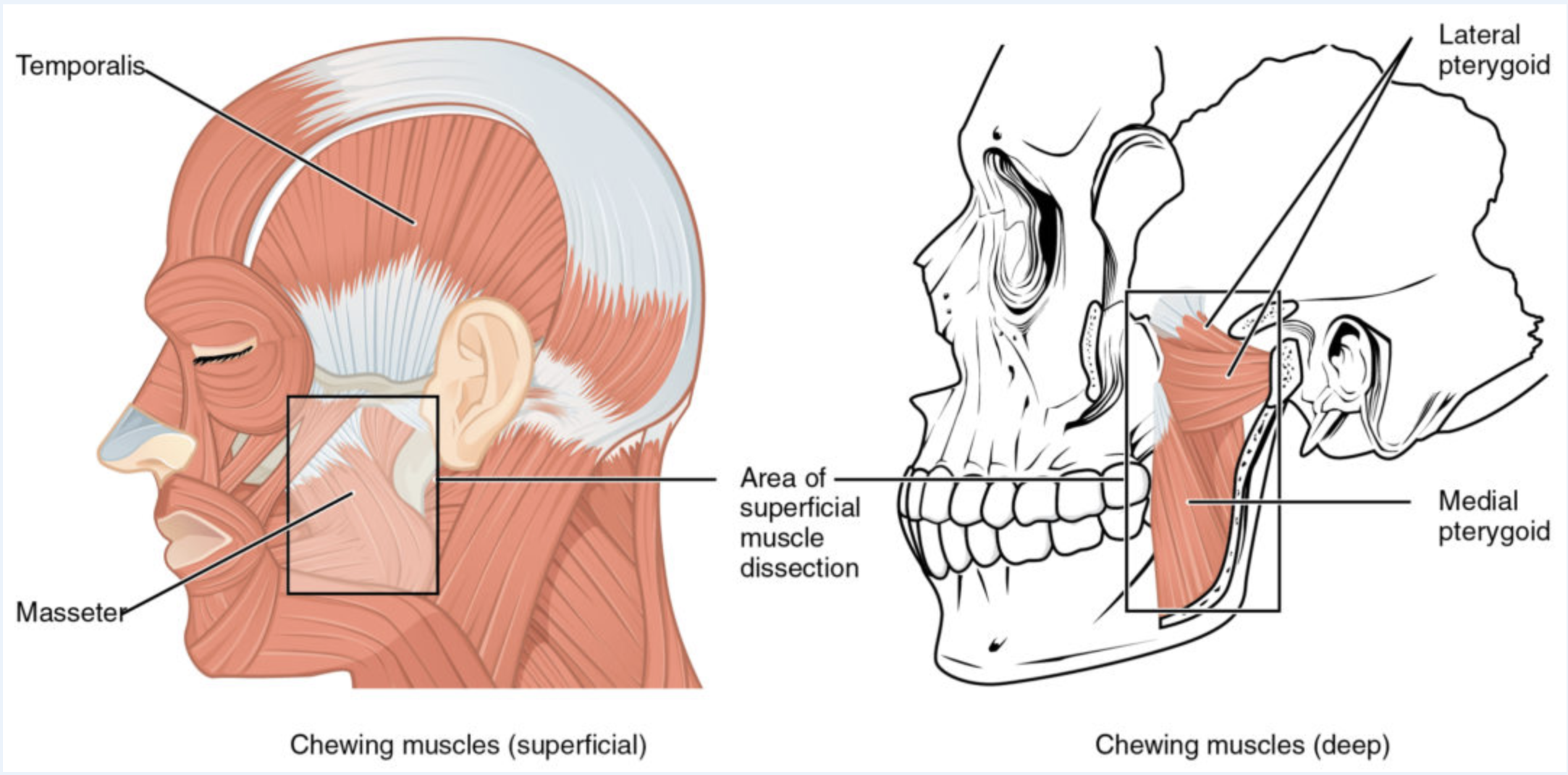A large portion of the adult population suffers from jaw pain these days. Disorders of the temporomandibular joint (TMJ) send patients to dentists and specialists seeking relief from jaw pain and headaches.
Dental professionals and TMJ specialists understand the complex nature of this joint and know the importance of keeping this joint healthy. Myofunctional therapy helps treat jaw pain by focusing on the position of the tongue. Tongue position is crucial because it helps to stabilize the jaw. When the tongue has a low resting posture, the condyle shifts forward and leaves the jaw unstabilized. Headaches and jaw pain are very common symptoms.
Read the Ultimate Guide to Orofacial Myofunctional Therapy
Read TMJ Pain: Can Myofunctional Therapy Help Me Find Relief?
Headaches
The image below shows the muscles associated with the temporomandibular joint (TMJ). As you can imagine, with the mouth constantly open or in the wrong position, the muscles will be stretched and tense all the time. This resting position of the face has muscles enduring constant tension leading to an unstable position of the jaw and causing tension headaches. Myofunctional therapy helps to correct this orofacial myofunctional disorder by working to re-pattern the resting position of the tongue (to the roof of the mouth) resulting in a closed mouth resting posture. Once a correct closed mouth posture is achieved, the muscles are relieved of constant tension and the headaches are alleviated. It’s an even better bonus that nasal breathing and proper swallowing are also achieved with a closed mouth resting posture.


